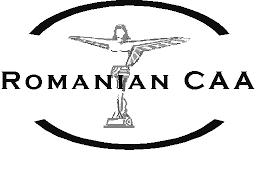The celebration of the 16 years of effective activity carried out by the Romanian Civil Aeronautical Authority, closely linked to the date of entry into force - February 28, 1994 - of the tariff provisions corresponding to the services provided, is an occasion of national pride to remind us that Romania, before As a member of ICAO, she was, along with 38 other states, a signatory to the International Air Convention - ICAN, established in 1919 at the Paris Peace Conference. ICAN was the international body that laid the foundations of today's "safety" concept, establishing the principles of air navigation regulation, aircraft registration, airworthiness certification, certification of air personnel competence, overflight, air transport, conclusion of arrangements between contracting states.
The contemporary strategic objectives of international civil aviation for the regulation, safety, security, efficiency and continuity of air operations and the protection of the environment in which they take place, have some of their roots in the contribution of Romanian specialists, who, in 1920, only one year since Romania's accession to ICAN, they promoted by Decree no. 4146, published in the "Official Gazette" no. 67/1920, "Regulation for the organization and functioning of the Aviation Directorate", tutelary forum of "airline lines belonging to the state". By attributions such as: "Fulfillment of all obligations dictated by international conventions for the regulation of air navigation" and "Regulation and policy of all air navigation, excluding military aviation", expressly mentioned in the regulation, it can be considered the birth certificate of the civil aviation authority Romanian.
Over time, with all the vicissitudes caused by the belligerent and political events of the various epochs crossed, in our country has developed, step by step, a well-regulated civil aeronautical system, characterized by a special level of safety, which places Romania on internationally leading places.
Thus, in correlation with the registration process carried out by AACR, the code "YR" inscribed on civil aircraft and currently, dates from 1932, becoming the traditional symbol of Romanian aviation.
The first - class professional pilot and civil aviation pilot licenses, similar to the licenses issued by the AACR to current seafarers, were instituted in 1962.
The evolution of the Romanian civil aviation legislative system, initiated in 1920 by the "Regulation for the organization and functioning of the Aviation Directorate", continued nationally by establishing, during 1948-1950, the flight regime in the Romanian airspace for all aircraft categories and of any nationality, by the entry into force of the first Air Code on December 5, 1953, by the promotion, in 1977, of the Technical Regulation of Civil Aviation and by the appearance of other normative acts in the period 1980-1990.
With the political changes among the signatory states of the Warsaw Pact, the legislative gates of European airspace opened and Romania quickly transposed the provisions of European regulations into national legislation, while consolidating, through Government Ordinance 29/1997 and Law 399/2005 and the Romanian Air Code.
As an appreciation of the efforts made and of the successful activities carried out in the field of civil aeronautics, Romania became a member of the elite European and international aeronautical "clubs": in April 1965 the notification of accession to the International Civil Aviation Organization (ICAO) was submitted, in 1991 it joined the states of the European Civil Aviation Conference (ECAC), in 1996 it became a member of Eurocontrol, in December 2000 it obtained the status of full member of the Joint Aviation Authorities (JAA), in September 2002 it signed the Bilateral Aviation Safety Agreement Agreement - BASA) with the United States of America, and in January 2007, following accession to the European Union, became a full member of the European Aviation Safety Agency (EASA).
As a result of these partnerships, significant events for international civil aviation took place in Romania: in 1980 the first ICAO meeting was held in Eastern Europe, in 1994 the 43rd ECAC Meeting was held, at the level of the directors general, among the first organized in a location other than the ECAC headquarters in Paris, in 2001 the JAA Committee held one of its annual meetings in Bucharest, and during 2009, during the ICAO audit for the surveillance of civil aviation safety in Romania, training sessions on "ICAO Safety Management System - SMS" and "ICAO State Safety Program - ICAO SSP" (the first of its kind organized by ICAO in Europe), as well as the first regional high-level meeting in Europe on aviation safety international civil society, as part of a new concept initiated within the mandate of member held by Romania in the ICAO Council.
The most significant event of 2009 was the audit carried out by ICAO, between March 23 and April 1, within the "Universal Aviation Safety Audit Program (USOAP)". The results of this audit showed that in Romania the aeronautical safety standard is met and offers solid guarantees.
Regardless of whether it was named the Aviation Directorate, the State Undersecretariat of Civil Aviation or the Civil Aviation Department, the Romanian Civil Aviation Authority has followed and achieved its objectives responsibly, fully contributing to the promotion, domestically and internationally, of an exceptional image of Romanian aeronautics. The environment, the working climate and the equipment provided, at the level of European standards, in the new AACR headquarters - inaugurated in autumn 2002 - and the way in which the AACR projects and activities were assumed, organized, carried out and completed, are due to the management of this institution. who, from the establishment until now, have held the quality of general managers and to whom we thank.
With pride and chosen consideration, the AACR Collective
